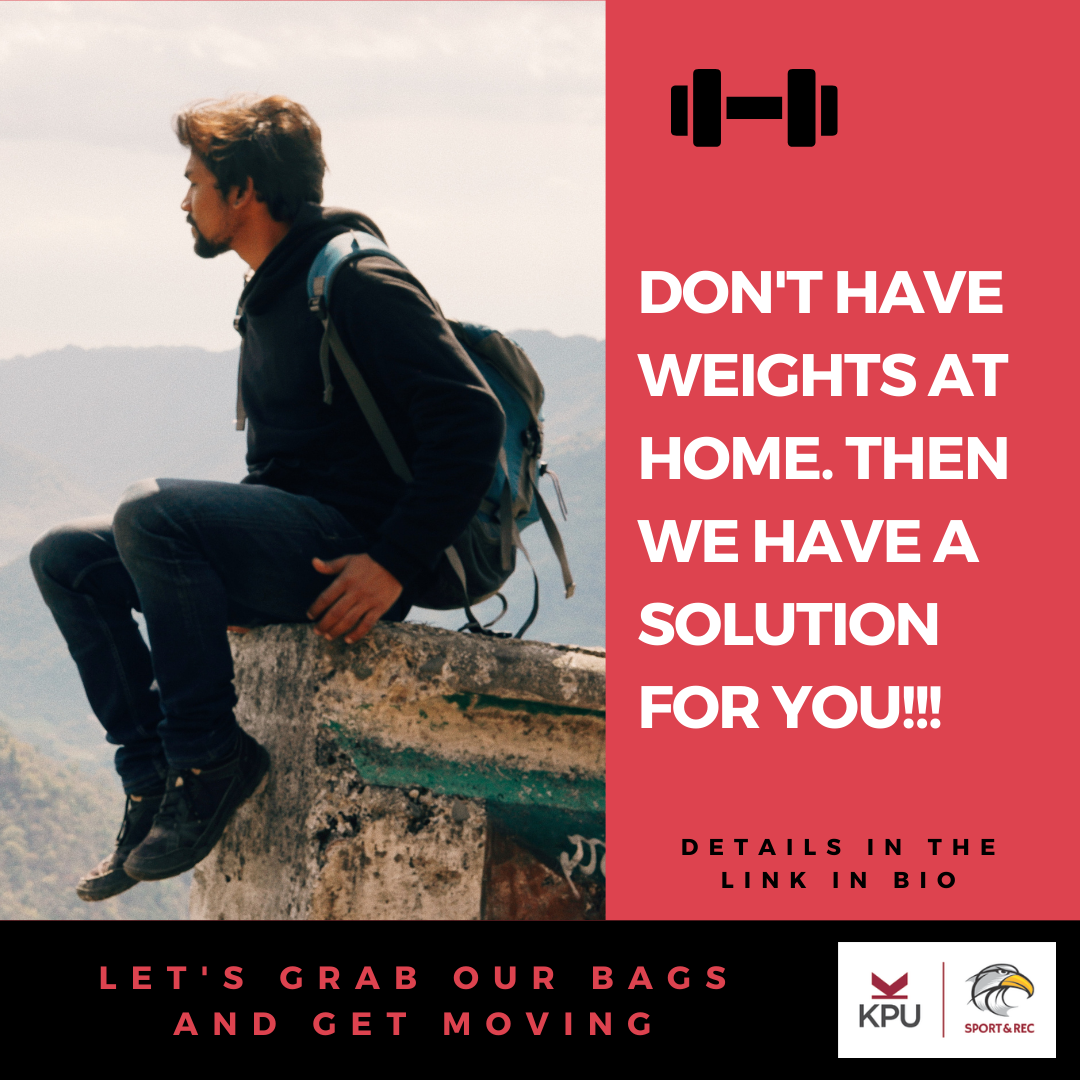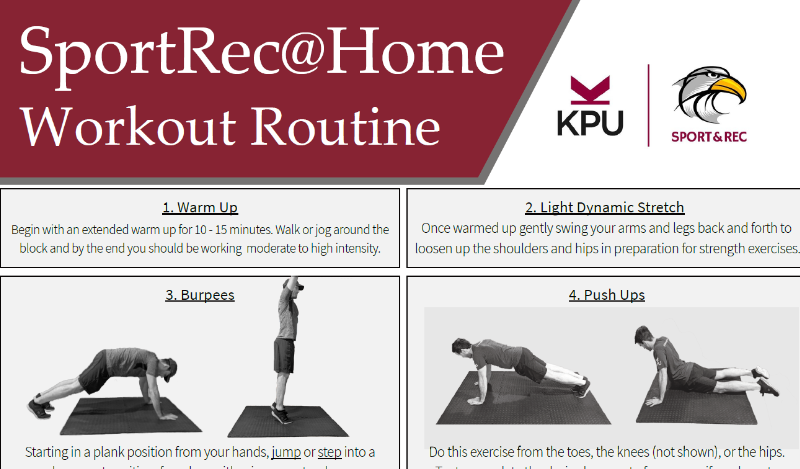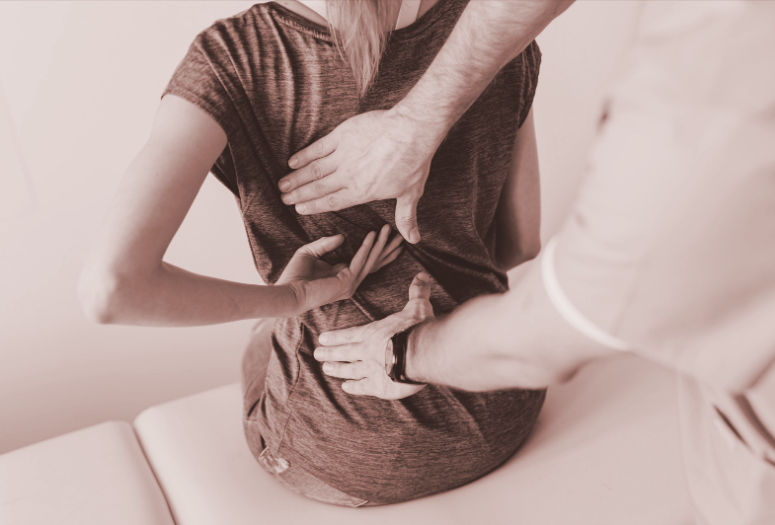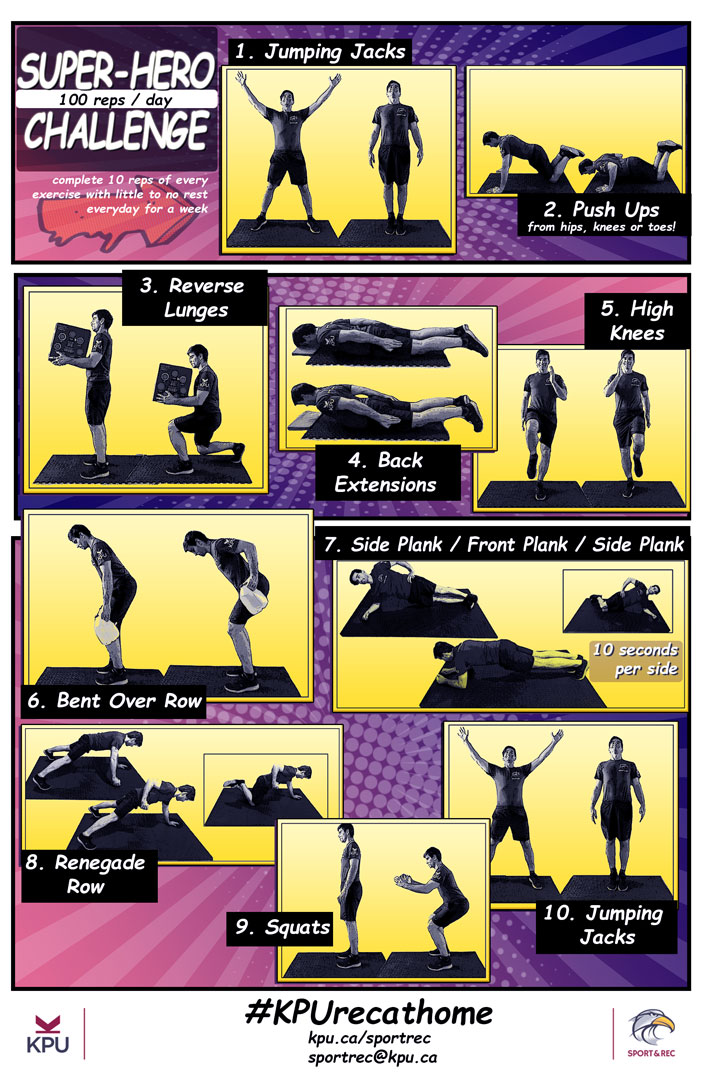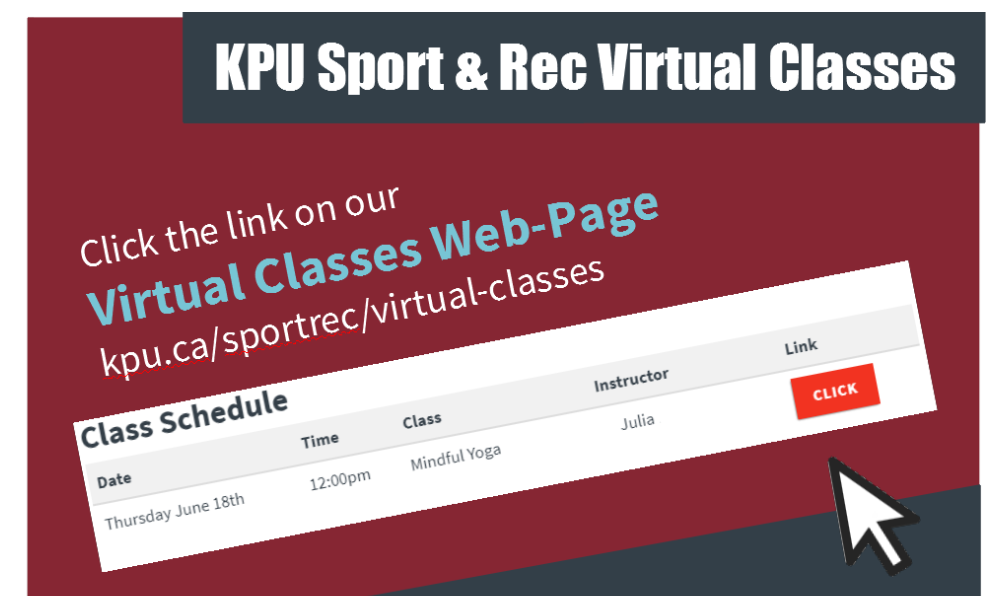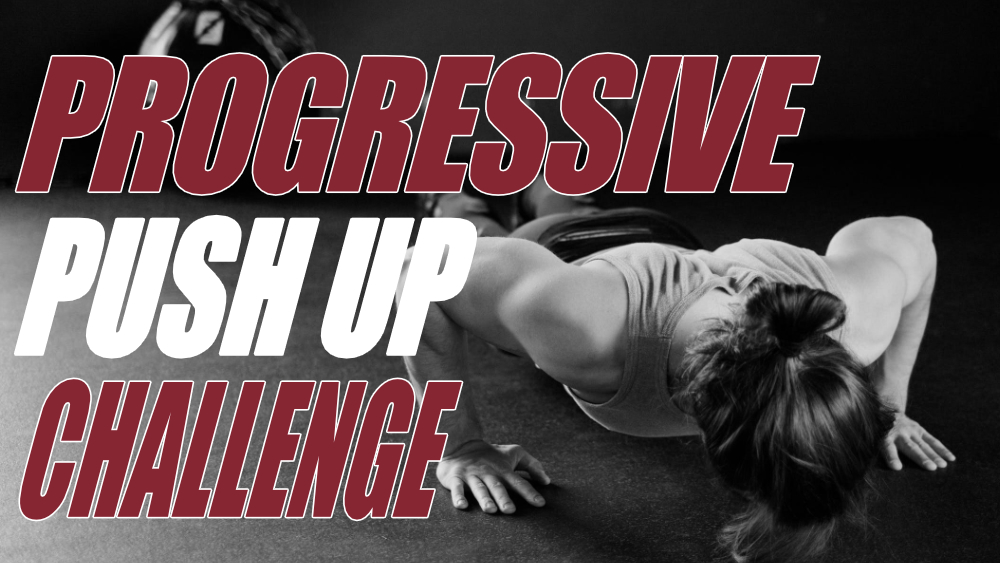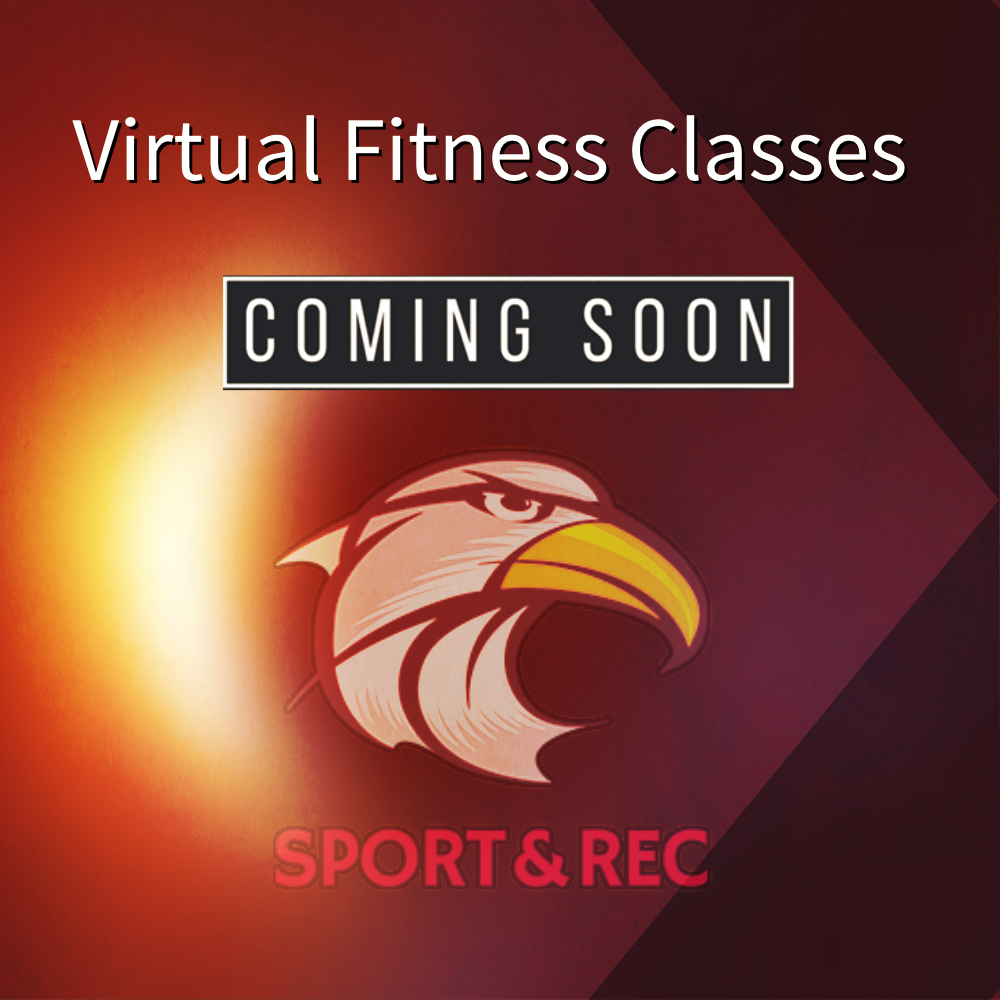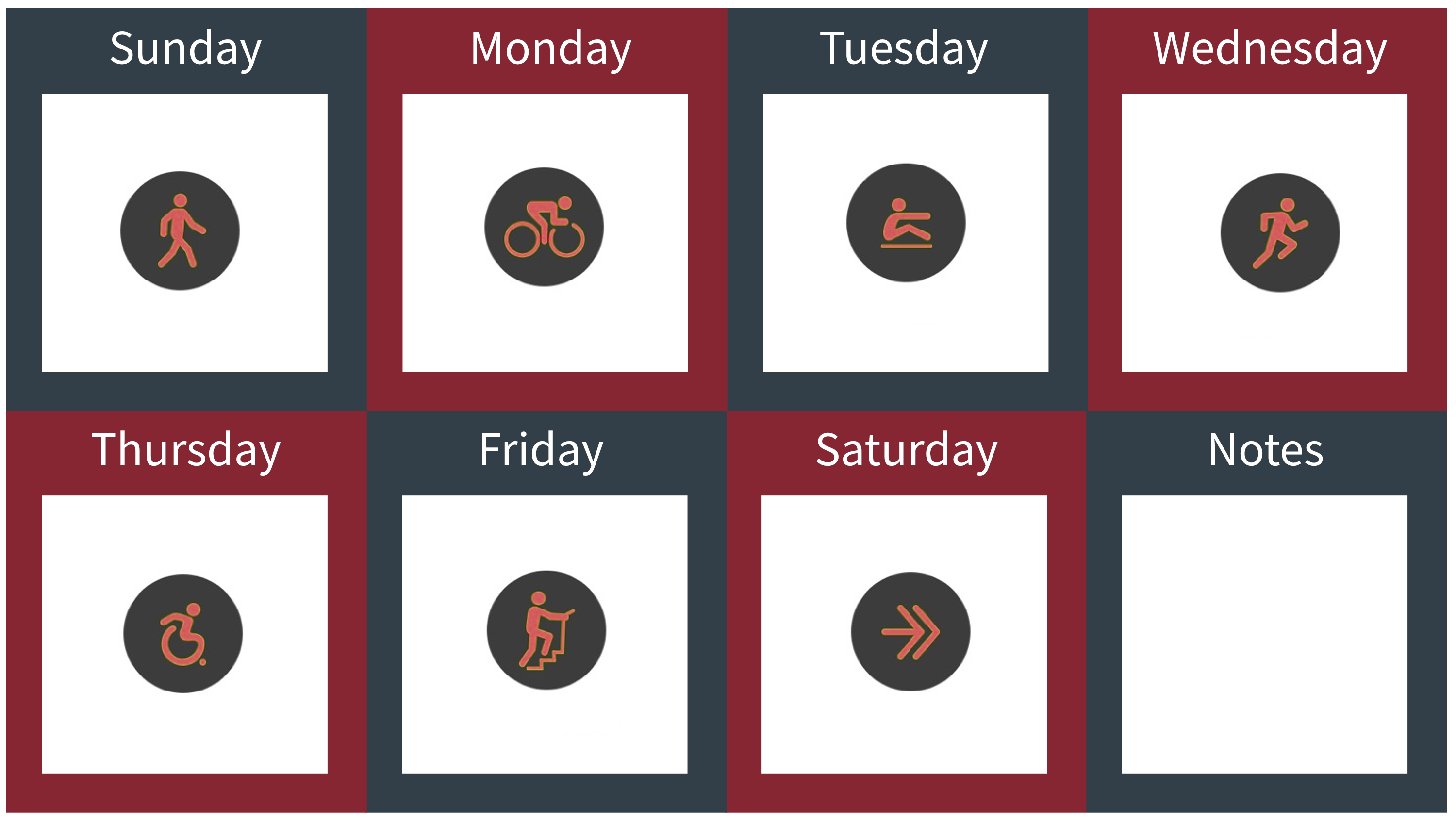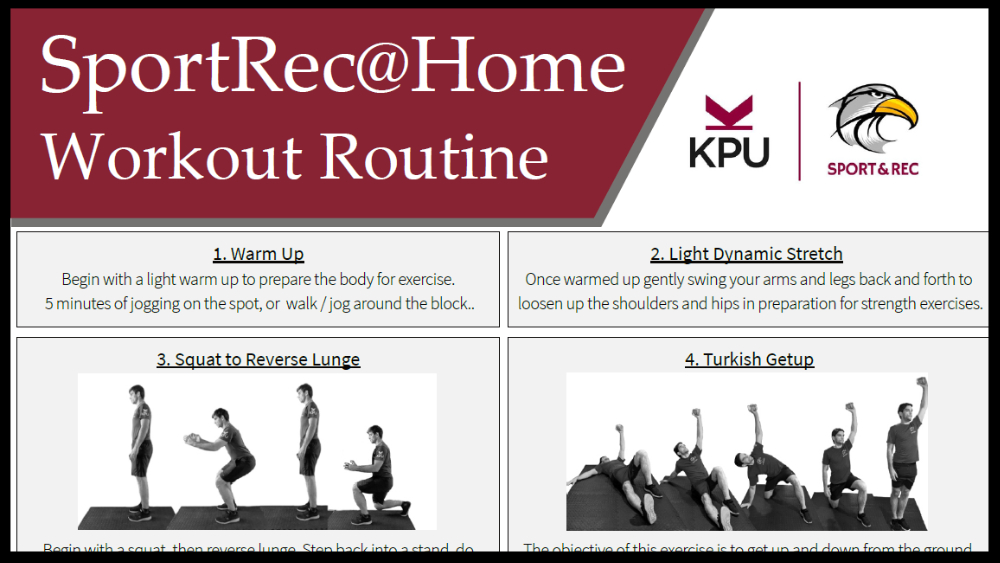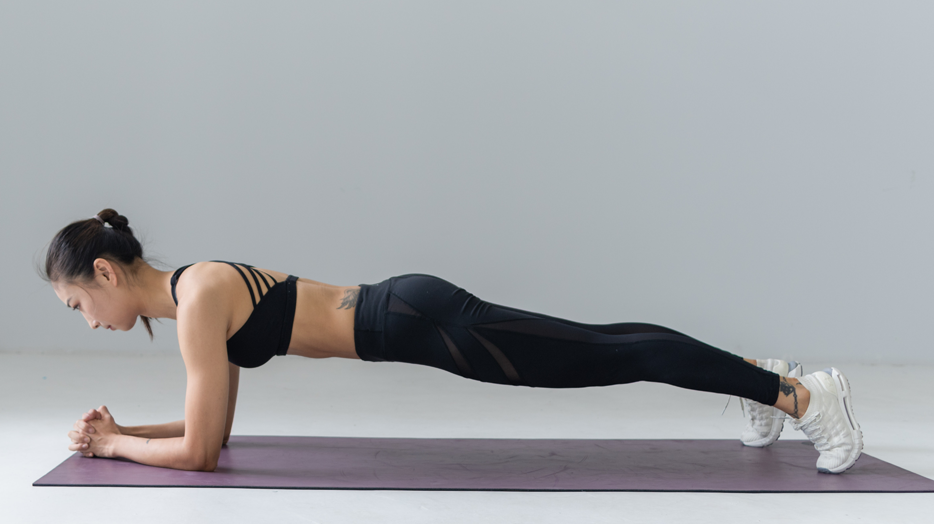Stay active and fit at home
Any movement can be considered activity as long as it is sustained for long enough and is at an intensity high enough to elicit a training effect. This is why many experts will recommend exercise begin at low-moderate intensities, especially when starting out. The 'low' is to ensure you do not exceed your capacity, especially if you have health conditions. The moderate is to ensure you achieve a level of intensity that goes beyond your regular threshold. What is right for you is a personal choice, progression should occur and you should always be assessing if you can handle 5-10% higher every few weeks!
Working out from home can sometimes be challenging, especially if you do not have any equipment and are not quite sure what to do. Here is a follow along routine that utilizes body weight and any type of weight stuffed into your backpack!
- Download the Backpack Workout
- Download the Equipment Substitutes Guide
- This workout also features a 5 minute follow along warm up video!
Sitting for prolonged periods of time, such as when studying or working at a desk, can lead to shortened muscles around the neck, core, and legs which can lead to pain and injury. Check out these two Chair Stretching Videos which you can do from your desk. A little can go a long way with respect to the body's overall well-being.
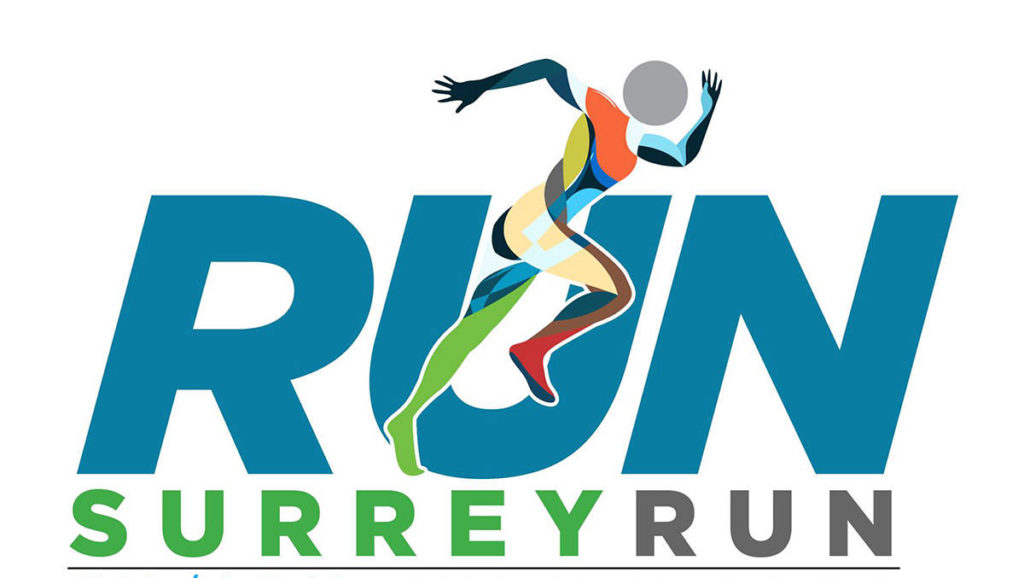
KPU is a proud sponsor of the inaugural Run Surrey Run 5K and 10K Walk/Run, and we are inviting students to join Team KPU.
As part of our virtual celebration of KPU’s 40th anniversary, we are offering to cover the registration cost for 40 students to participate in Run Surrey Run.
Participants will be selected by random draw. To enter, please email sportrec@kpu.ca with your name and KPU email by 5 p.m. May 20. If you are selected, you will be contacted with registration instructions.
Training programs
If you are not accustomed to long distance cardio then it is recommended that you engage in some type of training leading up to the event. Here is an 8 week program that is designed with the 10km goal in mind. You can enter into this program at any interval which you feel you are ready for. You do not necessarily need to begin at Week 1.

A good warm up will help decrease the risk of injury as well as enhance your overall performance. A good warm up should gradually increase your heart rate and use all the bodies joints that will be used for your session. A warm up should not be overly difficult nor be excessively easy. Follow along with this 5 minute warm up and then get to your exercises!!
The squat is a great exercise in the gym to train the lower body. The squat is also a movement pattern which can be found in many aspects of our daily life. Therefore it is essential that we know how to execute it properly so as to avoid unnecessary injuries.
It is quite common for longer distance events that your race day is your final increase in distance. This will allow you to train during the upcoming weeks without doing extensive damage to your body by over training.
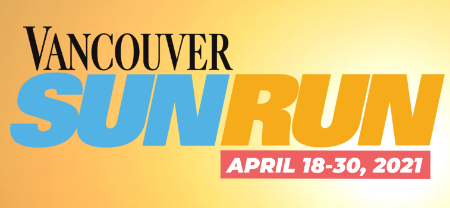
However, it is recommended that 5-7 days before your event you pull back on intensity and duration so that your body can fully recover. During training it is acceptable that you are not always fully recovered, but for race day you want to be fully rested for optimal performance.
Even though this is called recovery week, it should be noted that this does not mean zero activity. It is suggested that you give your body rest from the repetitive strains from running, jogging, and or long distance walking. Participate in activities that have a low risk of injury and may even contribute to balance and recuperation such as:
-
gentle yoga
-
gentle biking
-
swimming – if possible
-
pilates
-
tai chi
Athletes must remember that recovery is a crucial principle of training. A proper recovery week will allow your body to rebuild broken muscle tissue, replenish energy stores, and allow the body to adapt physiologically from your training.
If you do not pay attention to recovery then you may undermine all your hard effort.
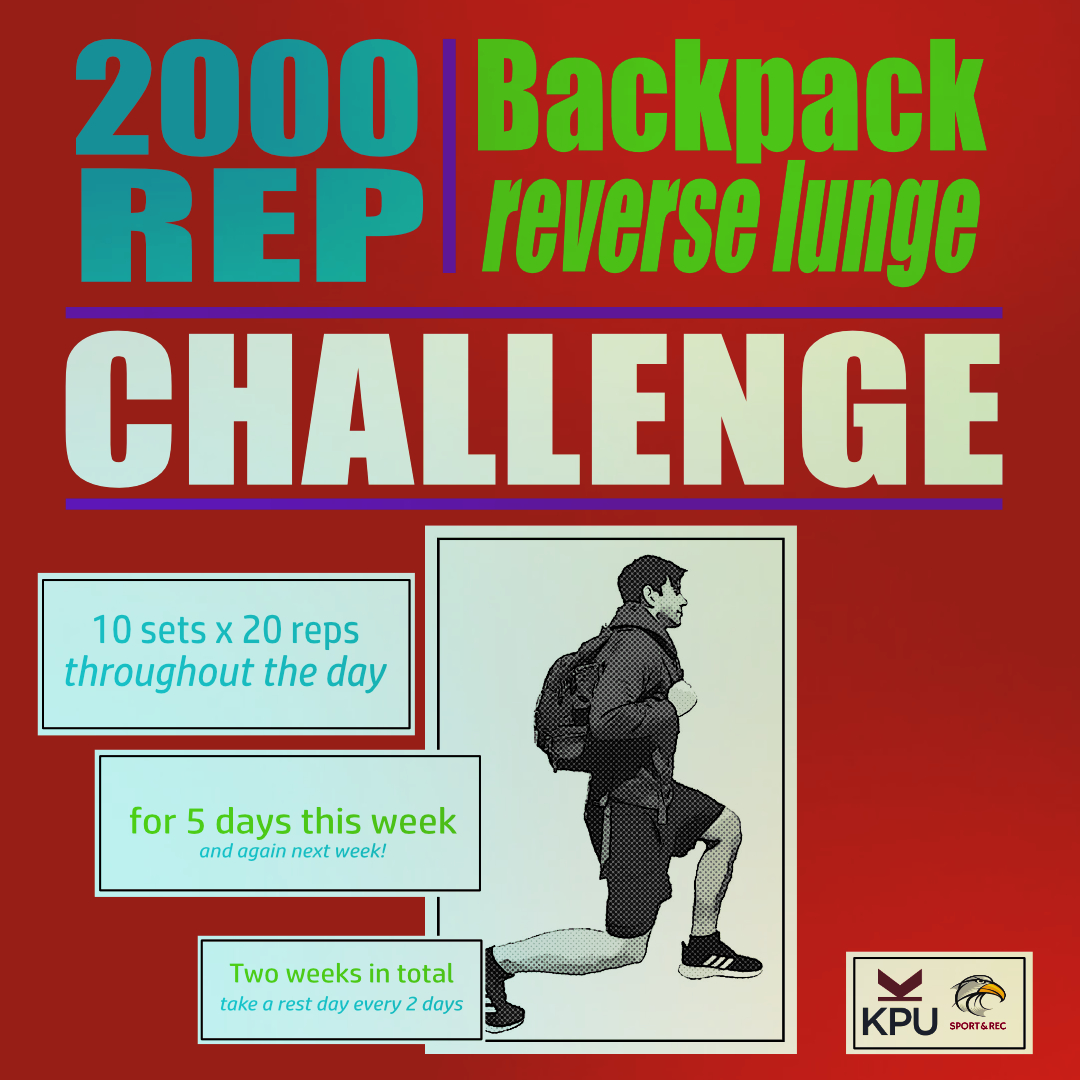
2000 Rep Reverse Lunge Challenge:
- 200 reverse lunges a day
- broken down into bouts of 20 reps x 10 sets per day
- do this 5x / week
- ideally taking a day off every two days for the next 14 days.
Some options for reduced intensity include:
- reducing this by half or even a quarter of the amount. 1000 reps in 2 weeks, or even 500 reps in two weeks
- be happy with the goal you choose for yourself
- do not wear the backpack
- half depth lunges to be easier on your knees
Here is part 2 of the Sun Run Training program. Both for the beginner as well as the advanced athlete. These programs build off the last phase and are meant to increase your duration and intensity that can be achieved through training.
You can post your Race Times between April 18th - 30th so whenever you feel ready for your 10km get out there!


Download the Programs Here
- For the beginner and intermediate download part 2 of your training program. The goal is for increased weekly walking duration , with one day of shorter but higher intensity training.
- For the advanced athlete download part 2 of your training program. The goal is now for increased lactic acid tolerance.
Check out this follow along Cardio Kickboxing Class. A full body workout utilizing minimal equipment substitutes as well as a few upper body and lower body kickboxing combos to get your body moving and heart pumping!
This past year has seen many changes to the operations of our daily lives. During this time, we may have had to use these changes as a catalyst to inspire new routines or ways of completing that which may have temporarily been halted.
For many, fitness was a daily routine that may have taken place in fitness centres or other spaces that are currently closed down or now run at reduced capacities. In the absence of these spaces, we have seen increases in streaming services that deliver workouts to computer screens. It is likely that this mode of exercise delivery is here to stay, and while these streaming services may not replace the studios or gyms, they offer yet another avenue for people to incorporate fitness into their daily routine.
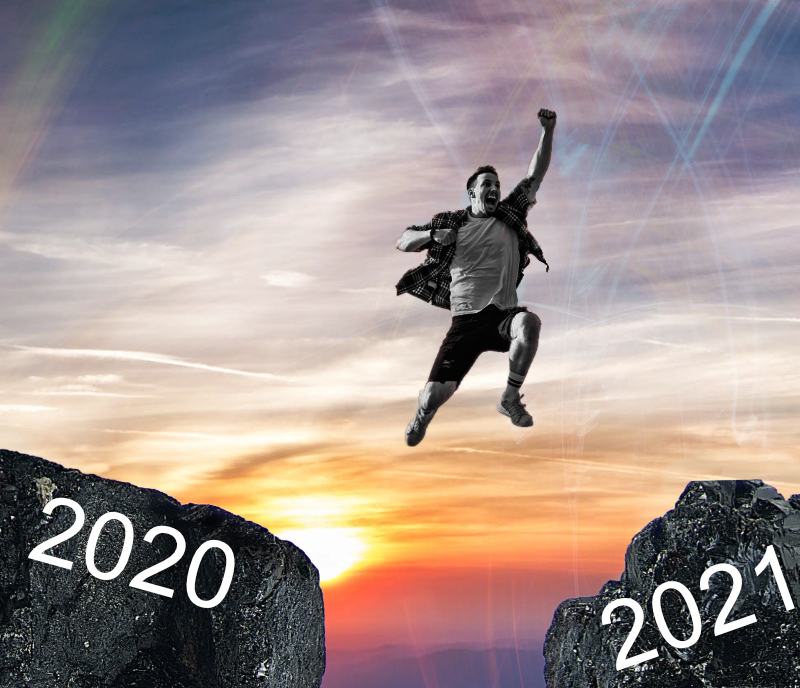


- Click for Equipment Substitutes 1
- Click for Equipment Substitutes 2
Home exercise equipment has also been a little harder to find as more and more people gravitate towards home gyms or extra equipment to facilitate their virtual home workouts. However, one does not need an entire studio's worth of equipment to exercise effectively. Weights from a store are often priced at around $1 per lb., so a pair of 10 lb dumbbells will cost roughly $20 or $10 each. You may only need a few options depending on your goals.
While we cannot predict the future, what is true is that we all need exercise and activity. Virtual exercise is here to stay, and working out from home is convenient. As we move into 2021, we should reflect on our daily exercise habits and think about whether changes are needed.
As per the Canadian Physical Activity Guidelines from the Canadian Society for Exercise Physiology, everyone should achieve a minimum of 150 minutes of moderate activity each week.
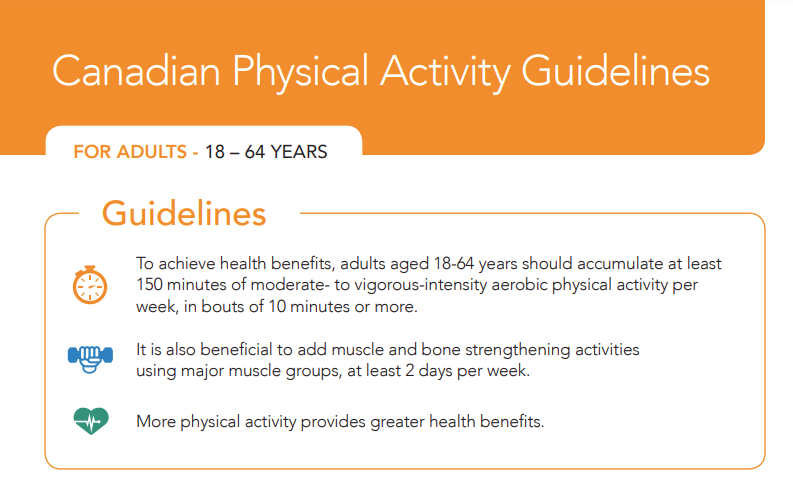
Working out at home can be just as effective as working out at a gym. It helps to have some additional resistance or weight options. Use this list to help find some items around the house that can facilitate your home workouts. Weights from 1 - 30+ lbs!

If you missed our live Sun Run Workshop then you can view this version anytime you want! Learn about basic training methodologies to assist in your distance program. You will also learn about nutritional strategies for race day, as well as a few tips and tricks to help prevent injury.
Whether you are a beginner or seasoned distance runner - long distance cardio is great for improving your health and bodies conditioning. So what quantifies as long distance cardio?
Typically anything from 20 minutes (beginner) to upwards of 2+ hours (advanced). The more you train in long distance the more you will increase your threshold of how far you can go.
Start with what is right for you!

The Virtual Sun Run occurs in less than 11 weeks from the date of this post (15-Feb-2021). Our training program will take you through 8 weeks of training with a minimum of 3 days per week of exercise. More for those that want it!
- For the beginner and intermediate the end goal will be for roughly 90 minutes of exercise utilizing walking, light jogging, and jogging intervals. This is roughly how long 10k will take using the mentioned intervals.
- For the advanced athlete the end goal will be to obtain 60 minutes or less of exercise performed at higher intensities. This pertains only if your goals are for increased speed!

The First 4 Weeks of Training (Beginner / Intermediate)
The goal of the next 4 weeks is to adopt a consistent routine and establish your baseline distance. If you are just starting out there is absolutely no need to be jogging or running at intensities that are difficult for you.
The focus should be on comfortability and sustainable exercise. This occurs when you are at a pace that has you breathing comfortably and you are able to speak without gasping for air.
Tips for the Advanced Athlete
If you are a seasoned runner, and you are looking to improve your race times, then it is important to build up your lactic acid tolerance. Pushing yourself to run faster may bring about challenging intensities that you are not used to. This may have been what it was like for you as a beginner, but you no longer remember the difficulty since distance has become your specialty!
Depending on your own level of comfortability I would suggest including interval training into your weekly routine. These will potentially be shorter duration runs for you. I recommend no less than 20 minutes, no more than 60 minutes. If you can go longer than 60 minutes your harder intervals are too easy.
General advice includes never pushing yourself 'excessively' harder than you are used to. Extremely high intesnity intervals are great for developing lactic acid tolerance, but only for the athlete who is ready for it! But this training is meant to bring the lactic acid and this feels uncomfortable!
- Download The First 4 Weeks: Intro to Lactic Acid Training for the Athlete looking to improve their race times.
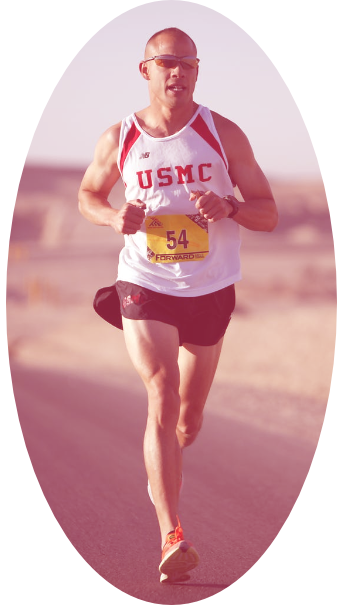
Go to our Virtual Classes Webpage to Join
Topics will include
Basic Training Methodologies
Tips for The Advanced Runner
Nutritional Strategies
Injury Prevention
Q&A
In light of COVID-19 and in an effort to help keep participants, volunteers and the community safe, the 2021 Vancouver Sun Run will be a virtual race event.
While there will not be an in-person race, you can still join thousands of others as you accomplish your goals and cross the finish line… virtually!

Whether you’re tackling the race solo or as a team, there are options for everyone. Run or walk your distance when and where makes sense for you!
You’ll be able to share your race results from April 18 – 30, 2021.

To join the KPU team:
Go to the Vancouver Sun Run website (if the link does not work try using another web browser - Internet Explorer may not work)
- Click on Register and then JOIN AN EXISTING TEAM
- The team name is KPU
- The pass phrase for this is KPU2021
Sport Rec will be assisting the team by providing training programs, keep your eyes on next week’s post!
Join Us Thursday February 18th at 12:00 pm for a Sun Run How To Workshop on MS Teams!
Go to our Virtual Classes Webpage to Join
Topics will include
Basic Training Methodologies
Nutritional Strategies
Injury Prevention
Q&A
Stretching keeps our muscles flexible, strong, and healthy. Muscles that become tight limit the bodies range of motion and this can lead to pain and decreased function. Daily activities contribute to muscle shortening, it is inescapable.
Therefor, it is important to include stretching as a part of your regular weekly routine. 2-7 days a week for 5 - 15 minutes or more. Often the more the merrier!
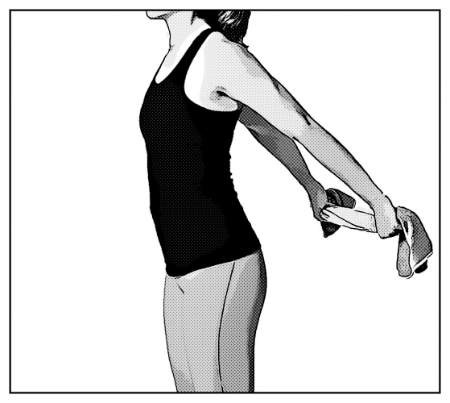
Since travel has been limited in the last year, many people have been spending more time exploring their own “backyard”. Here in the Lower Mainland we are blessed with hundreds of trails to spend our hours bathing in nature. The more you explore, the more you will find destinations that become your favourites.
This is a great website to find trails. It provides updated information, pictures, maps, and more.
All Trails - British Colombia, Canada
Here are some pictures taken from last Summer's adventures



- When going hiking it is always a good idea to let someone else know where you are going and to expect a text or call when you return to your vehicle. Be sure to prepare in case of emergencies (such as warm clothes, food & water, emergency shelter, first aid kit, signalling device, navigational device, pocket knife, and fire starter). You may be in your own ‘backyard’ but getting lost on trails is always a possibility. Be prepared!
See this site for helpful tips and tricks on what to bring on a hike:
North Shore Rescue - What to Bring
Here are a few pre-season exercises to prepare for the Spring and Summer hikes!
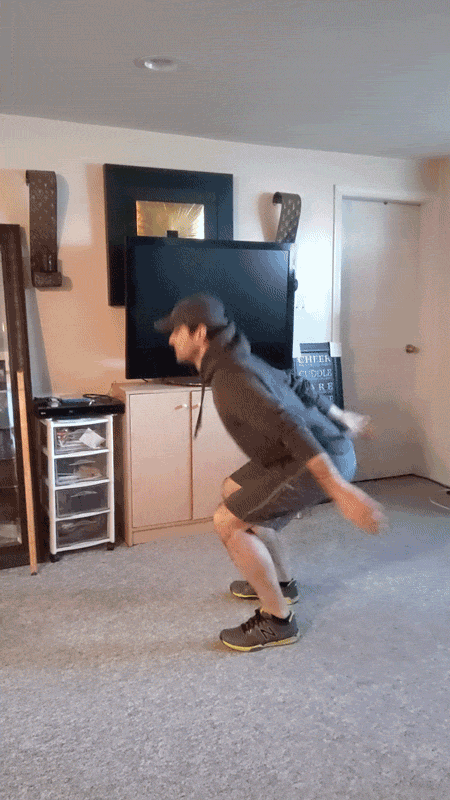
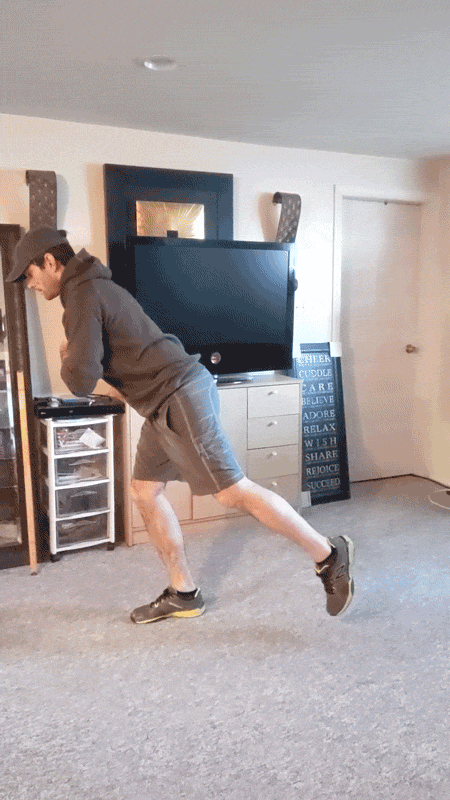
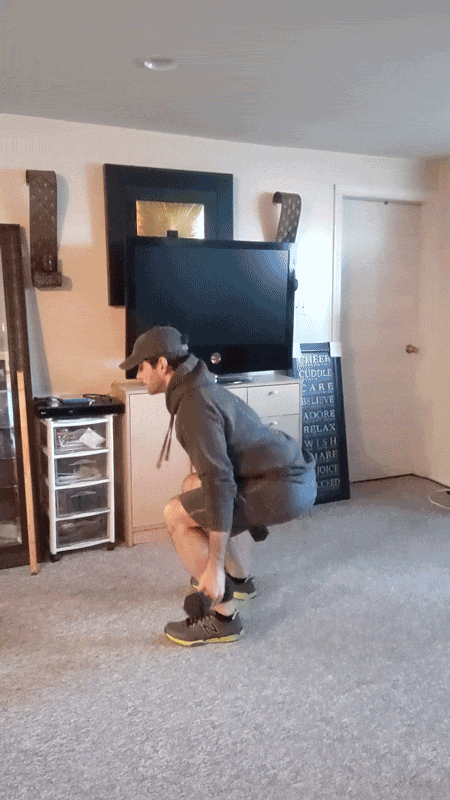
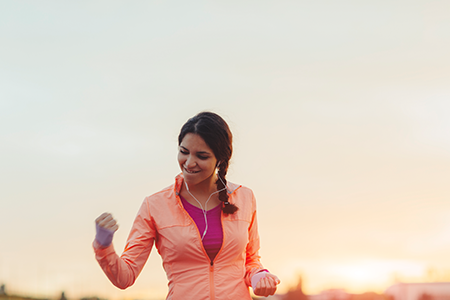
- Specific – Your goal should be clear and easy to state. Making it too broad or vague is a common pitfall. Stating a goal like “I want to get health” is far too broad. Get specific! Where do you want to focus your attention? Do you want to start exercising or quit smoking or lose 5lbs? Pick an area so that you set yourself up for success and not have too many things to focus on.
- Measurable – If your goal is to lose weight, then set a target such as “I aim to lose 5lbs in 10 weeks”. When setting a goal like this you can track your progress and know when you have achieved it.
- Attainable – When you set a goal, it needs to be realistic. Making it too challenging or easy can quickly become demoralizing. You are the best judge of your own limits so set a goal that you can accomplish.
- Relevant – A goal needs to be your own. Don’t set a goal if it isn’t something that you want to do. That said, make it relevant to your life and how it will help you. For example, if weight loss is not something that you are concerned about, then choose something that is like, being able to run 10K.
- Time Bound – Deadlines are important because they give us an end point. So give yourself a timeframe to accomplish your goal. For example, I will lose 4% body fat in 3 months.
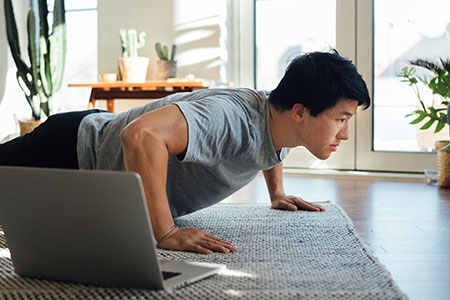
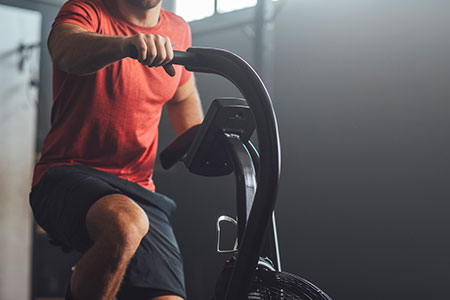
During a workout, your body requires more energy and this comes from 2 fuel sources, glycogen, derived from carbohydrates, and fat. Glycogen is your body's first source of energy during exercise. High-intensity workouts require more energy and quickly so your body taps into glycogen first. Once it runs out of glycogen it turns to fat as a fuel source.
Advocates of the fat burning zone argue that the body burns a greater percentage of fat with lower-intensity exercises because it does not need fast access to fuel. Moreover, 1 gram of carbohydrate is approximately 4 calories of energy while 1 gram of fat is approximately 9 calories of energy. Thus, they promote longer duration, low intensity workouts as optimal for weight loss. But don’t rush out for a slow walk quite yet! While at first glance this might make sense, we need to consider if this process is actually optimal for weight loss.
Though it is true that the body burns fat during low-intensity workouts, the fat burning rate remains low and you have to exercise significantly longer to burn the same amount of calories you would at higher intensities. During a high intensity workout, your body utilizes your glycogen stores first than taps into your fat storage, leading to a higher rate of calories burned overall. Ultimately, for weight loss, calories expanded need to be greater than calories consumed.
So where does that leave us? Thinking about your schedule, we often fit in activities based on duration not by calories burned. If you have a half hour to spare, your best bet would be to do a high intensity workout to optimize your time and caloric output. That said, there is also a place for low intensity exercise. Low intensity activities such as walking can be a great recovery tool or a way for you to feel rejuvenated. Even top athletes fit an array of different intensities into their training program. At the end of the day, balance is key. So mix it up and find the right fit for you!

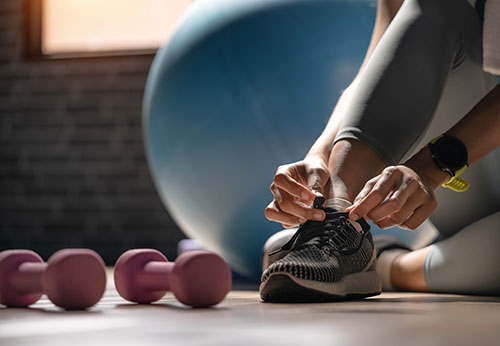
We’ve written lots of articles talking about the importance of physical activity and the impact it plays in managing one’s stress, mood and overall health and wellbeing so this November, Sport & Recreation is challenging you to a month of fitness!
As you might know, it is recommended that adults get at least 150 minutes a week of moderate exercise. That works out to 30 minutes 5 times a week or 50 minutes 3 times a week. This November fight the urge to be sedentary and aim for 150 minutes of exercise per week.
To track your daily activity, download our November Fitness Tracker: Fitness Tracker
Remember exercise does not strictly mean working out at a fitness centre though that is certainly one way to do it. It can also be any of the following activities:
- Going for walks
- Playing tennis
- Bike riding
- Going for a run
- Taking a fitness class
- Trying a new sport
- Kayaking
- Dance
Pick something you enjoy or make it a group activity with those in your bubble. If you need help, sport & recreation is here for you, join our online virtual fitness classes or email us at sportrec@kpu.ca if you have questions.

To learn more, check out the full article from CampusWell.
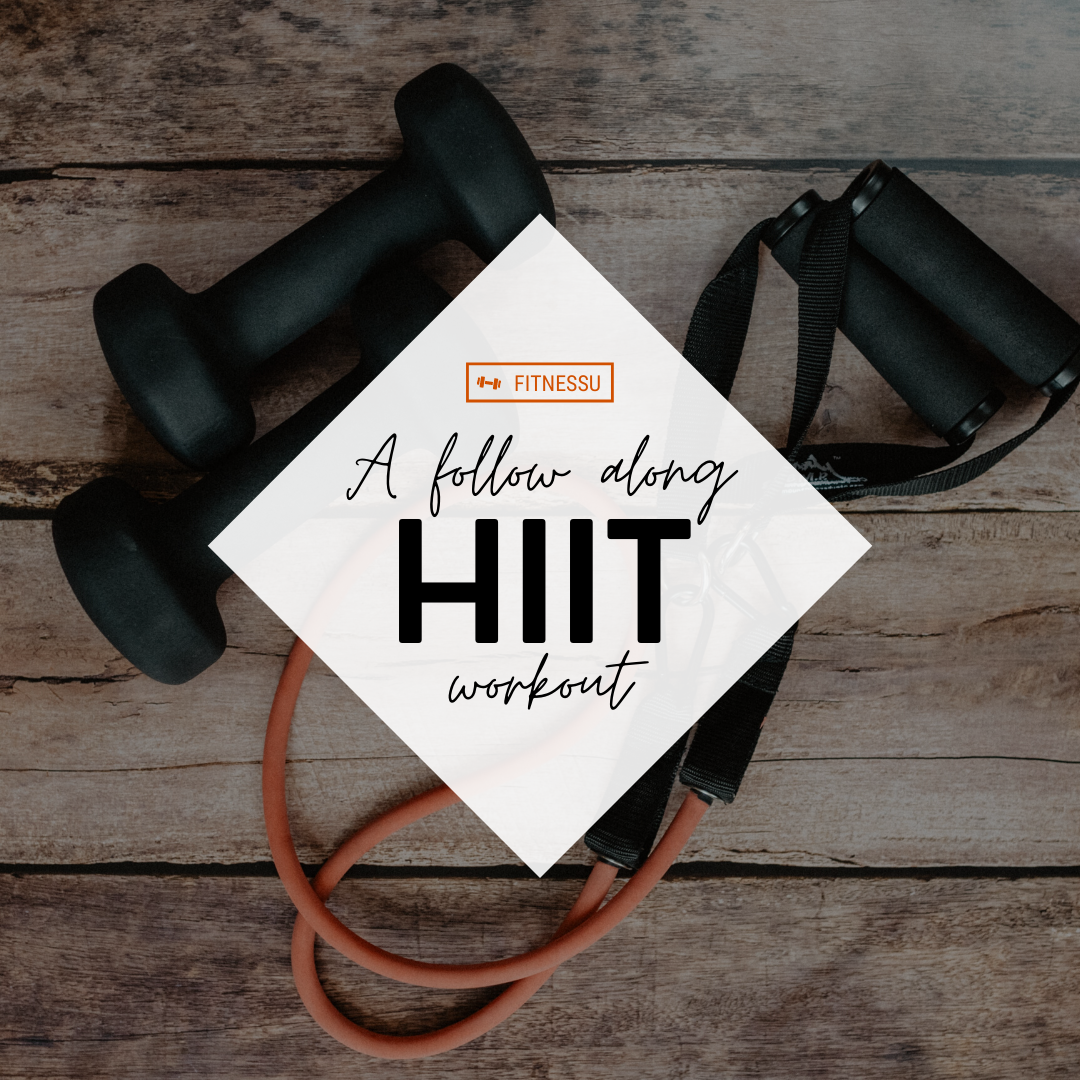
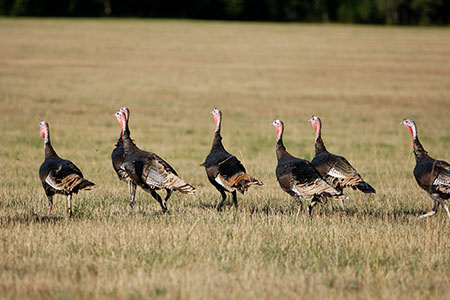
For those of you who don’t want to participate we have our own challenge for you.
Starting Monday October 5th to Sunday October 11th record as many kilometers as you can!!!
Please keep in mind that if you are starting out, walking or running up to 3-4 times a week is considered excellent. If you are an advanced runner, running daily is feasible but we recommend that you take a recovery day to prevent injury and give yourself ample rest. Always remember to warm up before and stretch after your run/walk.
| Day | Time (Minutes) | Distance (Kilometers) |
|---|---|---|
| Monday | ||
| Tuesday | ||
| Wednesday | ||
| Thursday | ||
| Friday | ||
| Saturday | ||
| Sunday |
There are free apps such as Strava, Apple Activity Tracker and many more that will help you track your distance and time.
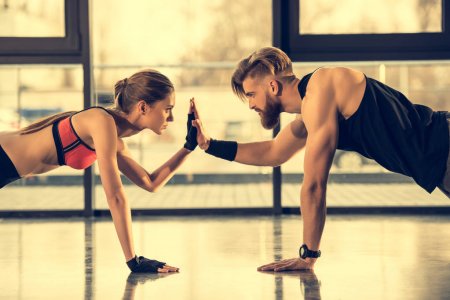
Start Small: Make it manageable by starting with as little as going for a 15 minute walk or a 30 minute workout 2-3 times a week. Once you have the basics, you can build on that.
Prioritize: If you really think about it, many of us spend time scrolling through social media, watching Netflix or mindlessly surfing the internet. You will be surprised by how much time this adds up to. Also, if health is a priority try waking up 30 minutes earlier and starting your day.
Schedule: Planning this time into your day and finding the discipline to stick to it might be challenging at first but soon enough it will become a habit.
Convenience: Rather than heading to the gym, make things easier on yourself by working out at home or while at work. There are lots of online fitness class that you can join at lunch time or simply go for a walk.
Multitask: Rather than sitting on the couch and watching Netflix at the end of the day, try doing some simple exercises while you watch your favourite show. Not only will it make the time pass quicker, you will have completed a full work out by the end.
Make it a Social Activity: Whether it is with family or friends, make physical activity a group one. You could go for a hike, run, bike ride or take a fitness class together.
It’s been a strange and stressful year for many of us, and it helps to have an outlet. Research shows that physical activity can lower stress levels and help us cope with things like depression and anxiety. It’s even better when you do it outside—exercising outdoors appears to boost our mood and energy levels more than doing so indoors (Environmental Science & Technology). Take advantage of the next beautiful day and try one of these four outdoor workouts.
Read the article from CampusWell
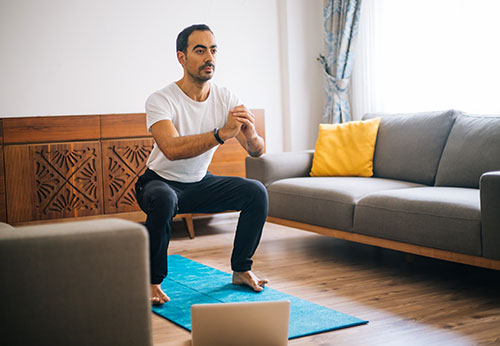
Here’s how to Squat with proper form:
- Stand with your feet shoulder-width apart
- Squat down by pushing your knees to the side while moving hips back
- Try to get below parallel or as low as possible without your knees coming over your toes
- Squat back up while keeping your knees out and chest up
Challenge
This challenge is intended as a way for you to practice good form and to get into a routine of incorporating squats into your regular fitness routine. Like with anything, practice makes perfect!
| Day | Sets | Reps | Total |
|---|---|---|---|
| Monday | 2 | 15 | 30 |
| Tuesday | 3 | 15 | 45 |
| Wednesday | 3 | 20 | 60 |
| Thursday | 4 | 20 | 80 |
| Friday | 4 | 25 | 100 |
| Saturday | 4 | 30 | 120 |
| Sunday | 5 | 30 | 150 |
Break up the repetitions if you need to but try to complete them unbroken. Remember to keep proper form and go at a pace you can manage.
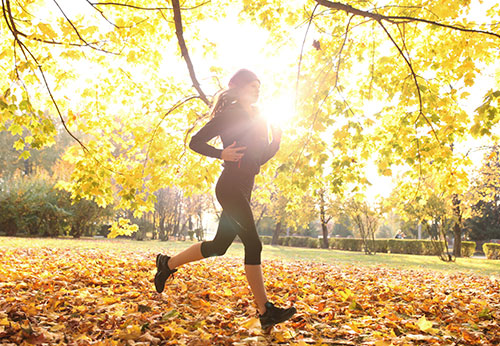 September is finally here! Back to school and the start of pumpkin spice everything. It is a great time to develop new habits and a fitness routine to battle the eventual winter blues. To get your started, we have compiled a list of tips to get the ball rolling:
September is finally here! Back to school and the start of pumpkin spice everything. It is a great time to develop new habits and a fitness routine to battle the eventual winter blues. To get your started, we have compiled a list of tips to get the ball rolling:
Ease into a New Workout
While it great to have goals, starting a new workout that is too challenging is often the reason people fall of the wagon. It is important to set SMART goals and ease into a new fitness routine. If you don’t Sport & Rec has you covered. Here are three workout plans for you to follow:
Make Fitness Fun
Fitness does not have to mean working out at a fitness centre. You could incorporate, basketball, tennis, biking or swimming as other forms of activity. If that’s not for you, try a new group fitness class like Yoga, kickboxing or HIIT. Joining a group can be fun and build a sense of community. Check out KPU‘s free virtual fitness classes.
Find a Workout Buddy
A workout buddy can be a friend, family member on anyone you can celebrate milestones with. It creates a sense of friendly competition, motivation and accountability.
Keep A Workout Log
A fitness log can help keep you accountable to your long-term goals. It provides a record of measurable progress, which is critical for achieving your goals. If you’re not one for detailed workout logs. Try the Sport & Rec Daily Activity Tracker. It is quick, easy and will help you stay focused.
Challenges
Fitness challenges are a great way to have fun with your peers and keep you motivated! These short term goals keep things fresh which often leads to better adherence. Try some of these one-week fitness challenges.
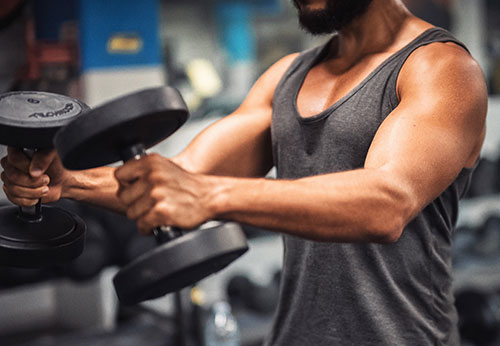
Those of us who work out regularly know that the feelings of fatigue, burning lungs and muscle soreness are common when we push ourselves outside our comfort zone. However, there is a fundamental difference between discomfort and pain. During intense exercise or whenever you push yourself harder than usual, your muscles produce lactic acid. The buildup of lactic acid is what leads to sore muscles or a burning sensation that people often recognize as a “good workout”. This sensation is often temporary and not a cause for concern though in more severe situations it can cause quite a bit of discomfort. In such cases, give your body time to recover by taking a rest day or doing a less intense workout.
That said, as we have touched on in our previous posts, to continue to see progress whether performance or aesthetic, it is important to continue to challenge yourself every workout. Getting complacent is what leads to a lack of progress. In fact, the production of lactic acid actually plays a role in creating more blood flow to the muscles so that you gain more strength and endurance in subsequent training sessions.
Pain however, is your body’s way of warning you. If you experience sharp or acute pain that happens quickly rather than the buildup over the course of your session, that is a sign that you should cease working out and seek medical attention. Choosing to push through pain can lead to injury or long term damage. This goes for strength training, HIIT sessions and even stretching.
Bottom line is, if you want to see progress you have to get uncomfortable and challenge yourself. However, pain is an indicator that you’re going beyond what your body is currently capable of doing. That’s not to say that you won’t get there one day but it means that you have to build up to it gradually. Work hard and be consistent but also remember to listen to your body and be kind to yourself!
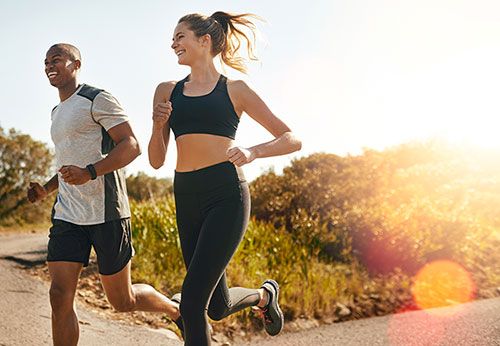
Aerobic Activity
Aerobic activity causes your heart rate to elevate which increases blood flow to your muscles and lungs. It includes cardiovascular activities such as walking, jogging, biking, swimming or dancing. Improving your cardiovascular fitness will maximize your heart, lungs and blood vessel’s capacity to transport oxygen which is important in improving your muscle performance, stamina/endurance, and allows your body to recover more quickly after working out. When selecting an activity, pick something that you enjoy, mix it up, and keep things challenging to ensure that you continue to see progress.
Strength Training
Strength training is an essential part of a workout program. It helps increase muscular fitness and bone density. If you don’t have access to strength training equipment, there are a ton of items you can find around the house that are an excellent substitute. One such example would be using milk jugs filled with water or sand to increase resistance. There are also lots of body weight exercises such as squats, pull ups, pushups and crunches that you can incorporate that do not require equipment. Whether you are trying to lose weight, maintain or gain muscle mass, aim to incorporate strength training at least twice a week.
Stability
Core strength is a key element of stability and should be an aspect of every fitness program. The muscles in the abdomen, lower back and pelvis make up your core muscles and help protect your back while stabilizing your upper and lower body movements. Engaging your core while lifting heavy weight helps stabilize your body and ensure proper form. Supplemental core exercises such as planks, crunches and leg raises can also be utilized to increase muscle engagement and development in that area. Balance exercises and yoga poses can also be beneficial to improving overall stability. Try incorporating this as part of your regular routine.
Flexibility
One of the most neglected aspects of a fitness program is Flexibility. However, flexibility or stretching should be a regular part of every fitness program to prevent muscles from contracting and tightening. Not only does stretching increase flexibility which can make exercises and daily activities easier, but it also improves the range of motion of your joints, which improves posture and prevents injury. Stretching should be done at the end of your exercise when your muscles have blood flow to them and are receptive.
While it might not be possible to fit all of these components into your daily routine, incorporating each a few times a week will do wonders for your overall health and fitness.
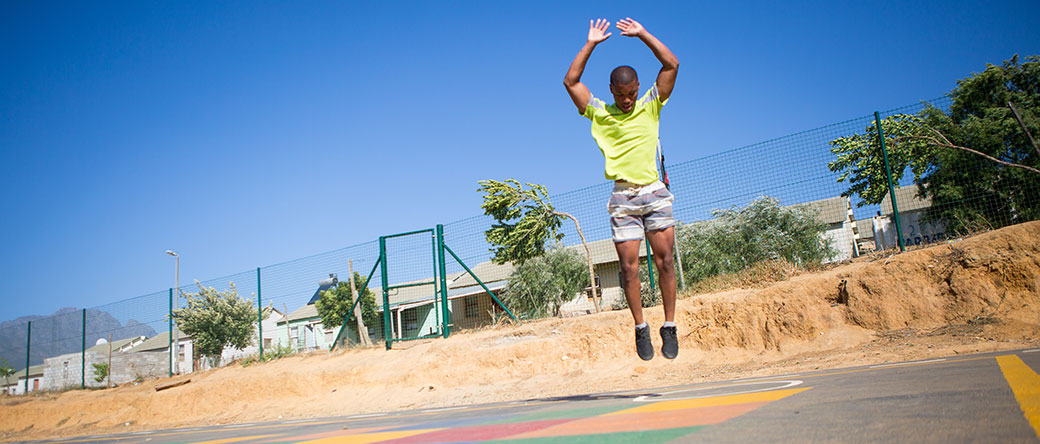
The burpee is an exercise that usually solicits universal groans at its mere mention but here are a few reasons to do them!
- The burpee is a fullbody exercise that targets arms, back, chest, legs, and core
- It does not require any equipment
- It’s a great exercise to improve conditioning
- You can add them to any workout to increase the intensity since it spikes your heart rate as much as sprinting
How to do a burpee?
While there are lots of different variations on the burpee this is the beginner’s step by step guide. Please note that you should keep breathing as you perform this exercise, be aware of your body movements and do not do this exercise if you have knee or shoulder injuries.
- Stand up straight, then get into a squat position with your hands on the floor in front of you.
- Kick your feet back into a push up position and immediately drop your chest to the ground.
- Push your chest up, then return your feet back to the squat position as fast as possible.
- Immediately jump up into the air as high as you can.
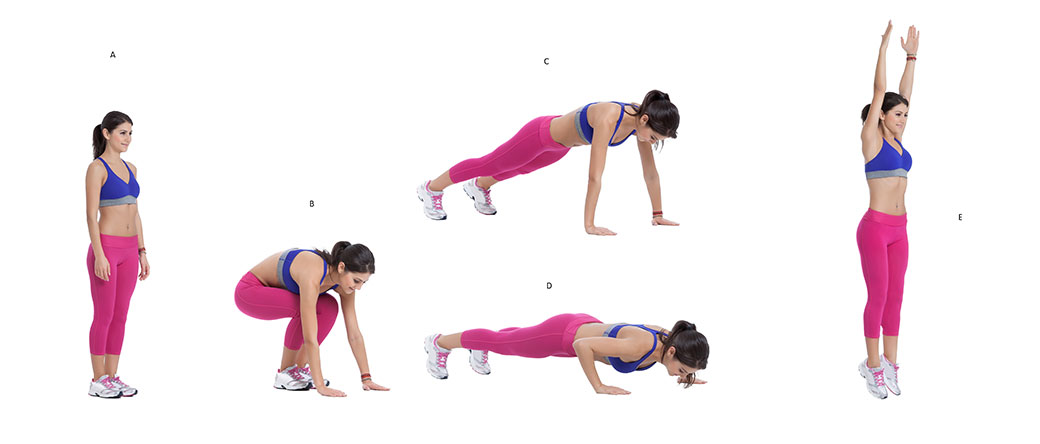
7 Day Challenge
The point of this challenge is to help you improve the number of burpees you can do with consistency. 7 days of this challenge isn’t going to dramatically change your body but it might help you learn how to do them correctly and motivate you to incorporate them into your regular workout routine.
| Day | Sets | Repetitions |
|---|---|---|
| Monday | 2 | 5 |
| Tuesday | 3 | 5 |
| Wednesday | 2 | 10 |
| Thursday | 3 | 10 |
| Friday | 2 | 15 |
| Saturday | 3 | 15 |
| Sunday | 3 | 20 |
*Remember to rest between sets and keep breathing!
When performing exercises 3 - 8 try to move from one to the next as quickly as possible to keep your heart rate elevated and the intensity high. This does not mean rush through the exercises, keep the movements slow and controlled. Maintain a strong core!
- Use whatever you want for weights, I chose 2x Water Jugs for my heavier weight, and 2x tomato paste cans for my lighter weights
- Reference the @home equipment substitutes list
- Download the 25 - 40 minute Home Workout here.
Are you unable to make a full 45 minute virtual yoga class? Here is a great option to practice yoga on your own time with a 25 minute follow along video! If you have more time you can incorporate these movements 1 or 2 more times as suggested in the video. If 25 minutes is exactly what you are looking for than look no further!
Whether it’s morning, mid-day or evening this practice will guide you through stretching, strengthening and relaxing the body and mind.
In this installment we are going to discuss the myth that lifting heavy weights bulks you up. For a complete understanding of the common misconceptions, we will briefly review the history of weight training. For a more accurate understanding of the physiological adaptations that occur with weight training, we will also look at the science of human physiology.
The History of Weight Training:
Weight training as a means of developing strength has been around since ancient Egyptian and Greek societies which depict people lifting heavy rocks as measures of power. However, it wasn’t until the late 1800’s to the early 1920’s that weight lifting infiltrated main stream culture and a global industry was born. By the 1980’s bodybuilding became a popular sport that influenced film and TV stars, models and even other sports.
The desire to increase strength and size along with advances in science saw the beginning of an incredibly dangerous phenomena of taking steroids to enhance muscle development. This paired with high media coverage has had a profound effect on people's perceptions of what weight lifting is. It is not uncommon for weight training to be confused for body building.
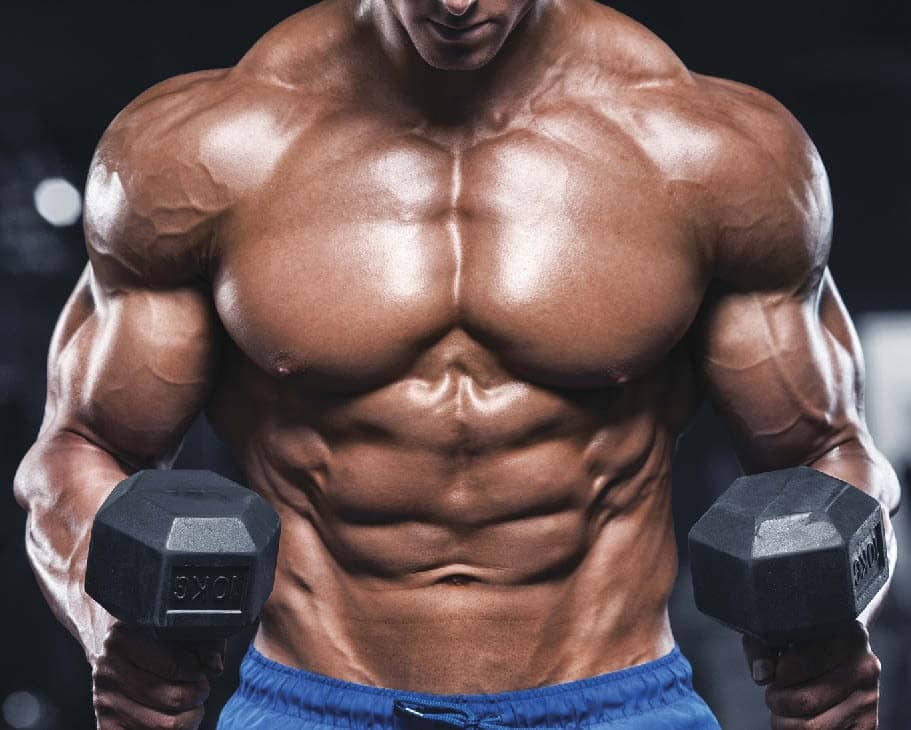
The Science of Weight Training:
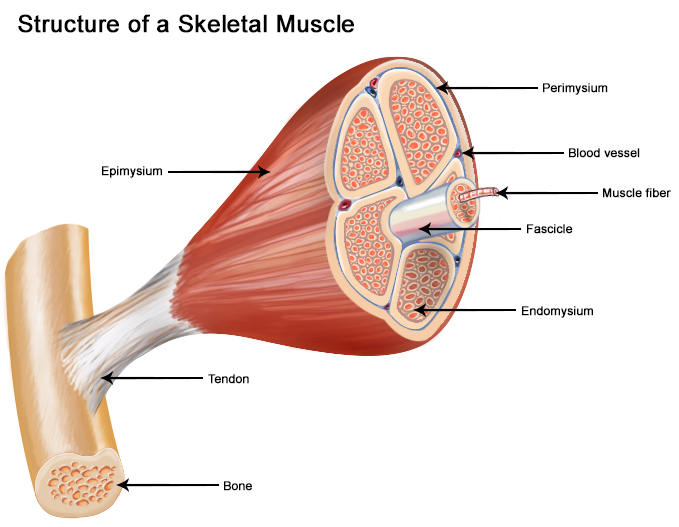
Unfortunately, many of the images we see in the media with respect to body builders are not ‘natural’ and this physique is not possible without synthetic steroids, combined with an excessive routine of lifting weights, eating, and sleeping multiple times a day every day of the week.
It is completely normal to want to lift weights once to five days a week, regardless of whether you prefer light weights and high repetitions, or heavy weights and low repetitions you will grow muscle. With an increase in muscle tissue, the body will begin to burn more fat at rest...this may actually have the effect of making someone appear ‘less bulky’.
The Conclusion:
When performed safely, lifting heavy weights can help improve the body's ability to perform daily activities and increase one’s strength and power. The average person loses 1 lb of muscle mass every year after the age of 30, so lifting weights can help combat this loss. Do not fall into the trap of media trends and generalizations around weight lifting. Lifting heavy weights alone will not change your body type such that you become the next Mr. Olympia. How your body responds to exercise is going to be unique to you and your body's metabolism. Performing different types of exercise routines will have various effects on your body especially over the long term so it is always best to have a well balanced approach.
If you are interested in changing your physique it is always good to keep track of your routine, diet, and results. If you are unhappy with your results consult a professional and look for guidance.
Check out this exercise routine that specifically targets all the areas around your spine. Sitting all day long can cause muscles in the upper, mid and lower spine to become shortenend and/or lengthened as well as weak.
When muscles become imbalanced like this they can begin to pull on the spine creating aches and pains.
Check out the Stability and Mobility Exercises for Your Spine Routine.

Wouldn’t it be nice if we could choose the areas we would like to target? Spot Reduction has been promoted as a way to reduce fat stores in specific areas. A quick internet scan will provide you with countless exercises to target your problem areas. However, do they actually work? In short, although spot reduction would be ideal, scientific studies have debunked this fitness myth.
How does fat storage work?
Fat distribution is dependent on several factors such as gender, age, genetics and lifestyle. While some people store body fat proportionately, others will have higher fat storage in specific areas like, thighs, belly and glutes. This is particularly true for women who generally have a higher percentage of body fat than men.
Spot reduction has been a popular belief that touts working muscles in the problem areas to burn fat in that specific area. Unfortunately, fat loss does not work that way. How does weight loss work?
Stored fat that is found in your cells are called triglycerides. Before the body can use triglycerides as energy it must be broken down into free fatty acids and glycerol. During physical activity, free fatty acids and glycerol are used as fuel to keep the body in motion. These can come from any part of the body and not specific areas.
So what does this mean?
In a nutshell, when an individual loses body fat, it is often evenly distributed through the body. Unfortunately, this means that if you have a ‘problem’ area, you are unable to target it and it will often be the last area you see progress.
Gaining weight can be frustrating but rather than trying the latest fad diet or workout craze, the best way to get results is by creating a calorie deficit. That means ensuring that your calorie output is significantly higher than your calorie input. If you want to see progress, track your diet, get some physical activity and be patient and consistent!
Be sure to checkout kpu.ca/sportrec/virtual-classes for more details!
This week we are offering up a Progressive Push Up Challenge with the goal to increase the amount of push ups you can do at once! If even only by 1 or 2. Begin the challenge by completing as many push ups as you can in a row (no breaks!). Then record that number and the next day repeat, but this time add 2 more. After the initial baseline test you may take as many breaks as you need to get the desired repetitions.
If your shoulders and chest are feeling sore, take a days rest in between!
- With that said, download our program and get pushing!
- Download our Progressive Push Up Challenge document here
- You may use Microsoft Teams or join via the web application.
- If joining via web application please include student or employee in your username.
- Please remember to turn off your microphone and webcam.
- Please have enough space to perform various exercises in a full range of motion.
- Remember to properly hydrate, and go at your own pace!
- Please see our Virtual Classes page for full details.
In conjunction with National Health and Fitness Day, KPU Sport and Recreation would like to challenge everyone to daily exercise. Whether it is walking, cycling, or anything that makes your heart pump and your body sweat. You can track your distance traveled or your time spent being active.
- Use this Interactive Form to record your daily exercise
This workout consists of 6 main exercises which all utilize many muscles of the body. This is great for helping activities of daily living and can be called functional training. Be sure to keep the movements slow and controlled to begin with. Keep your core tightened up at all times! These exercises are also great for developing total body power, as you get more comfortable with each movement increase your weight and speed!
- Use whatever you want for weights, I chose a can of beans for this series!
- Reference this @home equipment substitutes list
- Download the Power Movers - Workout Routine here.
- High intensity exercise is great for burning calories and building muscle. Make sure to listen to your body and modify as necessary. You may pause or take breaks whenever you need.
- This type of exercise is great for doing 1 - 3 times per week, be sure to give yourself at least one to two days in between doing this routine again. If you want to add a set be my guest!
Your core muscles are what connect your upper and lower body. It stabilizes your body, allowing you to move in any direction with proper balance. From putting on your shoes to running a marathon, a strong core is beneficial to everyone to ensure that the body is functioning properly. Besides ensuring proper mobility, strong core muscles are important for good posture, preventing back pain and improved balance and stability.
That said, it is often a neglected muscle group and simple core exercises should be included in a well-rounded fitness routine. To get you started, we have created a 7-day plank challenge for you to begin working on your core muscles. Click on the link below to download the tracking sheet. Remember to challenge yourself daily and work hard!
- Download the Electronically Fillable PDF here
Follow along with this downloadable yoga guide, we provide the specific poses shown in order. If you need to modify any movements for your abilities or skip specific poses all together, do what works for you. This is a guideline to get you on your mat and maybe create your own practice of what works best for you! Enjoy!
- Download the Yoga Routine PDF here
Over the last few weeks we have encouraged people to get active on a daily basis as we may find ourselves having to adapt to new situations. Minutes that count towards activity can really be anything, so get creative and have some fun. Here's how one of our Intramural Leaders is getting creative.
- Stuck at home with a roommate, family member or on your own?
- Attach cushions to yourself or set up a cushion wall to be able to continue your kickboxing practice at home!
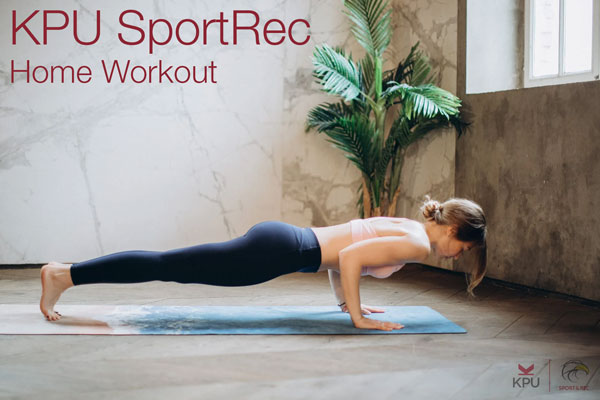
Working out at home might feel awkward or unconventional but all it takes is a little creativity and the will to get it done:
- Clear out a small space where you can freely move up and down from the floor.
- Make sure you have enough room to swing your arms and legs and step a few paces in each direction.
The objective of this program is to increase your heart rate and make your muscles burn a little bit! If the exercises are too difficult or you find yourself needing a rest, please feel free to stop at any time.
- Download The Home Workout Program (click here)
- As part of this program we have also included options for weight and equipment substitutions at home (click here)
Download this E-fillable Weekly Activity Tracker (click here). Keep yourself accountable for your daily and weekly movement. Create a copy for each week and fill it in as you go along.
Ways To Increase Your Daily Activity
Low Intensity Exercise
This type of activity is great for doing in longer duration's. It could be moving from room to room with no objective.
(20 - 120+ minutes)
Moderate Intensity Exercise
This intensity may vary for everybody. It should get your breathing rate up and be slightly uncomfortable.
(10-45 minutes)
High Intensity Exercise
This intensity of exercise will burn and be very uncomfortable. It is often paired with low intensity intervals for recovery.
(15-20min)
